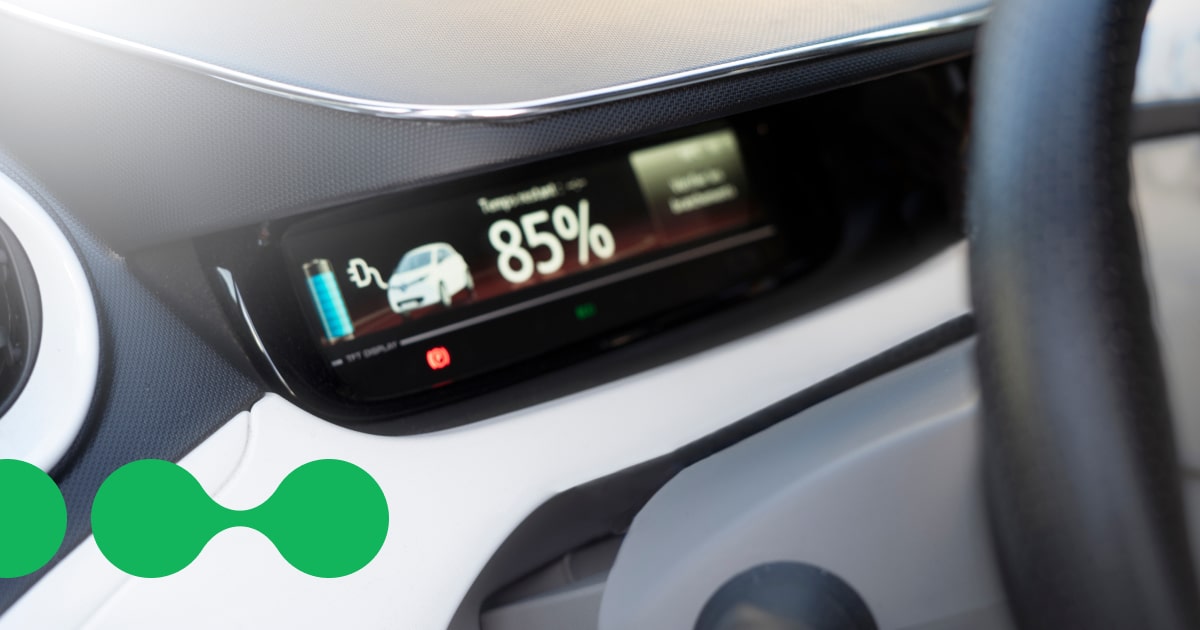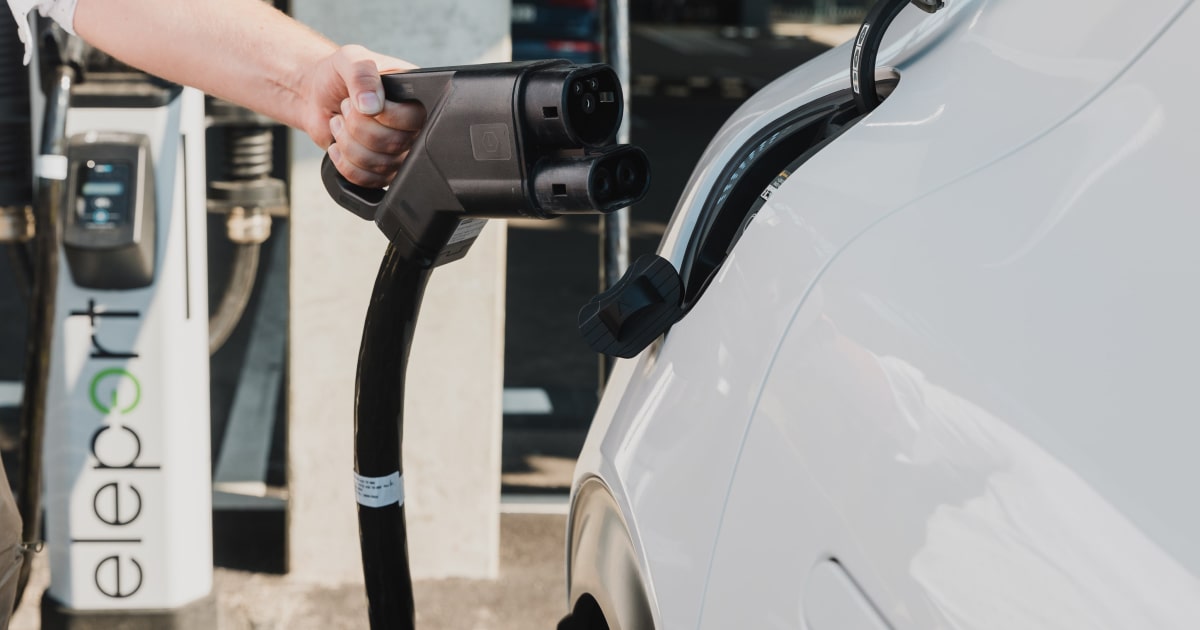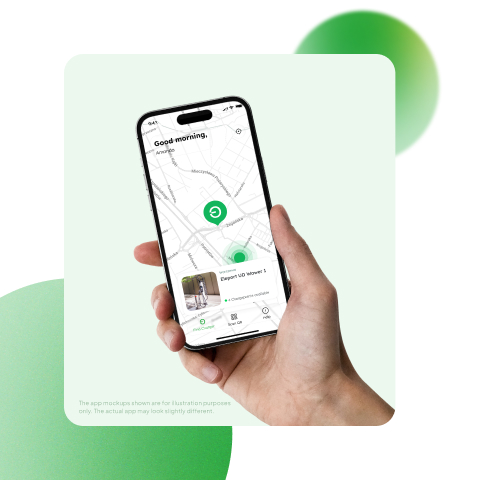If you walk into any dealership in Europe, the first question customers often ask isn’t about power or design. It will be: “How far can an electric car go on one charge?”
Official electric car range figures often claim more than 500 kilometres. But real roads tell a different story. A cold morning, headwind, or a long uphill stretch can cut that figure quickly. The car that reached 520 kilometres yesterday might struggle to clear 430 today.
This gap between tested results and real-world experience leads to a practical concern: Can your EV handle your commute, an unplanned detour, or a weekend away, without a forced charging stop?
For most drivers, the answer is yes, the EV battery range is plenty to cover it all. Improved battery systems and a growing EV charging network make day-to-day use predictable and convenient. Still, distance an EV driver can cover per charge depends on more than the battery’s stated capacity. It reflects road conditions, driving style, and external factors that change from trip to trip.
Understanding Electric Vehicle Range

A single figure rarely explains the full reality of electric car range. Every new EV comes with a certified estimate, based on specific range tests like the Worldwide Harmonised Light vehicles Test Procedure (WLTP) used in Europe. But daily use often tells a different story. The electric car range depends on several interrelated elements: technical, environmental, and behavioural.
The battery pack sets the foundation, but is only part of the equation. A vehicle’s weight, aerodynamic profile, motor efficiency, and even tyre choice shape how efficiently energy is used. Larger batteries offer more energy, but greater mass can also reduce returns.
Temperature matters. Cold air slows the battery’s chemical reactions and increases demand for cabin heat, which can lower range by 20% or more. In colder climates, a heat pump is added for EVs to heat the cabin more efficiently. The ability to be less affected by the weather changes also depends on the engineering of the battery and EV systems by the carmaker. Hot weather also draws energy for cooling, though the impact is less severe.
The charging speeds might also be affected when you get to a charger on a cold winter day, but luckily most 2025 EVs now pre-condition their batteries en-route to a DC charger, preserving peak charge rates even in winter.
Driving style plays a decisive role in battery range. Constant acceleration and high-speed cruising drain energy fast. In contrast, smooth driving through urban areas, combined with regenerative braking, helps extend battery life and total distance. In this sense, EVs are quite different compared to the ICE vehicles, on where the car is most energy efficient.
Other elements like road gradients, road surface type, headwinds, and the initial charge level contribute. Starting the trip with a full battery helps, but conditions on the road often define the outcome for longer trips. Seasoned EV owners learn to adjust to these variables, using the car’s built-in displays and experience to plan their routes.
The following factors shape the range of an electric car:
- Battery size and energy density
- Vehicle weight, shape, and drivetrain design
- Speed and traffic patterns
- Temperature and use of climate systems
- Terrain, elevation, and wind conditions
- Charge level at departure and recharge habits
The more experienced EV drivers can already anticipate most of the range difference ahead of time based on the trip they plan to take.
No single factor controls the result. The electric car range is the outcome of how these variables combine in the real world. As battery technology improves and manufacturers fine-tune energy efficiency, the gap between lab results and actual experience continues to shrink. However, understanding these influences gives drivers the tools to manage range confidently, regardless of route.
Comparing EV Ranges Across Popular Models

Some cars might surprise you with how far they go on one charge. Others are best suited to short daily routes, offering practical solutions for urban environments. To help buyers make more informed decisions, here’s a summary of the range of electric cars based on actual feedback from drivers across Europe:
| Model | Battery (kWh) | Real Range (km) |
| Tesla Model 3 | 75 | 550-580 |
| Hyundai Ioniq 5 | 77 | 420-480 |
| Volkswagen ID.3 | 58 | 330-370 |
| Renault Zoe | 52 | 270-320 |
| Nissan Leaf e+ | 62 | 320-350 |
These models easily cover the average European’s weekly distance on one charge. They fit well for most daily commuters, families, and city dwellers who want value and flexibility.
Longest-Range Electric Cars Available Today
A closer look at the current leaders highlights what sets them apart. Here are three standout models for a battery-supported distance, with real-world electric car range data collected by ev-database:
- Lucid Air Grand Touring: Claims 960 km official range, with real-world figures up to 800 km.
- Mercedes EQS 450: Rated for 798 km; often delivers about 650 km daily.
- Tesla Model S Long Range: Rated at 624 km under optimal conditions this EV commonly achieves 530 km in practice.
Their performance rests on the latest battery technology, smart energy management, and efficient design. For anyone planning regular long-distance journeys, these vehicles remove much of the uncertainty that once came with early electric models.
Do Electric Cars Have a Longer Range Than Petrol Vehicles
Petrol loyalists love to boast about 800 kilometres on a single tank and often say this is why they’d never choose an electric car. In practice, few drivers cover that distance without a stop in between. Modern electric cars, especially those with the latest battery technology, close the yearly gap. But the real shift is not just about distance.
Ask yourself: Where do you “refuel” a petrol car? At the petrol station. Where do you charge an EV? Anywhere with a socket—at home, at work, on the street, or at a public fast charger.
The range of an electric car now rivals that of many compact petrol models. The difference is that if you charge overnight, you start every morning with a “full tank.” For most families, that changes the entire rhythm of mobility. For many EV drivers, this difference means they actually spend less time charging their electric car compared to refueling their ICE car.
Charging Infrastructure and Range Anxiety

Range anxiety—the fear of running out of battery without reaching a charger—once shaped the public perception of electric vehicles. It discouraged many early adopters, especially those who travelled long distances or lived outside urban areas. But this fear no longer reflects the reality of today’s charging landscape.
In fact, most driver surveys today already show that the “range anxiety” is larger before buying an EV and is gradually decreasing as they get familiar with driving their EV day to day.
Across Europe, public charging infrastructure has entered a phase of rapid expansion. Tens of thousands of charge points now line motorways, city streets, business parks, and residential areas. In fact, Europe surpassed 1 million public charge points in 2024, per the IEA. Charging stations appear at supermarkets, hotels, airports, and shopping centres. In several countries, fast-charging points already outnumber traditional petrol stations in some urban zones.
To travel with full confidence, consider the following practices:
- Begin long trips with at least 80% battery to allow for unexpected delays or detours.
- Plan charging stops along known corridors with fast or ultra-fast stations.
- Recharge when your battery drops to 20–30%, rather than waiting for a critical level.
- Carry a Type 2 charging cable for public AC chargers or destination points.
- If possible, use a route-planning tool that calculates the distances and battery charge you will arrive with.
Avoid remote routes with limited signal or service unless you have already confirmed charging access.
Future Trends in EV Range Development
Battery development continues to raise the bar. Manufacturers now aim to double the range of an electric car without increasing battery size.
Solid-state batteries may enter the market before 2030. These cells store more energy, charge faster, and weigh less. They also reduce safety risks and cut production costs over time.
Meanwhile, traditional lithium-ion packs grow more efficient each year. Lighter materials, smarter software, and better aerodynamics help new models travel farther without extra bulk.
In the next five years, most standard EVs will reach 500 kilometres per charge. That level of performance will change expectations and eliminate range as a deciding factor for most buyers.
Conclusion
So, how far can an electric car go on one charge? Depending on the model, conditions, and driving style, the answer ranges from 270 to over 700 kilometres. That is enough for nearly every daily journey and most long European trips.
With stronger infrastructure, smarter energy use, and rapid improvements in battery design, electric cars now deliver reliable range across all segments. Whether you seek a compact city car or a long-distance cruiser, options exist that suit your needs and budget.
The focus now shifts away from electric car range concerns. Instead, drivers can choose the vehicle that fits their lifestyle, not just their destination.



